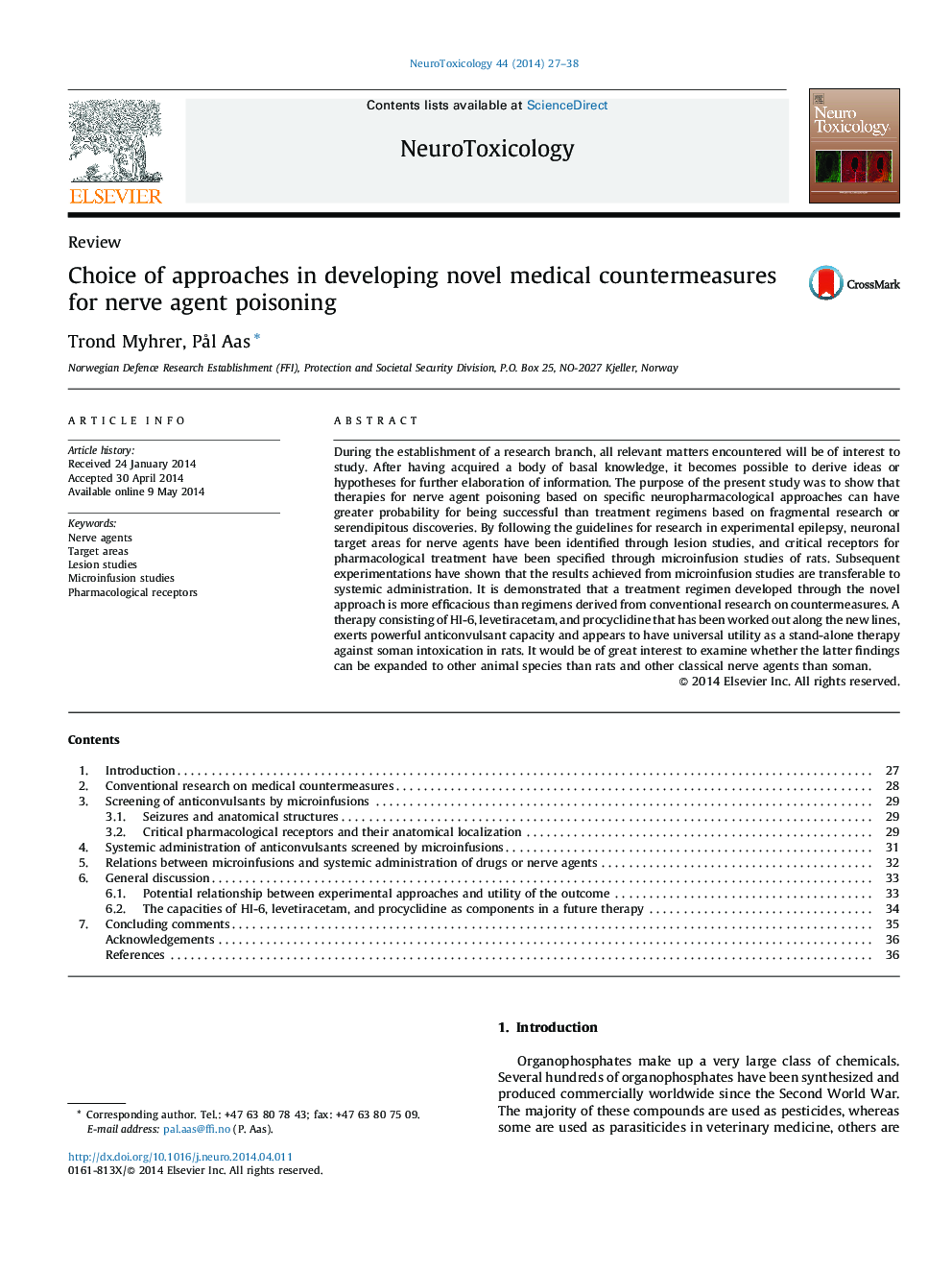| Article ID | Journal | Published Year | Pages | File Type |
|---|---|---|---|---|
| 2589656 | NeuroToxicology | 2014 | 12 Pages |
•Identification of neuronal target sites for nerve agents.•Specification of critical receptors for treatment through microinfusions.•Results from microinfusions transferable to systemic administration.
During the establishment of a research branch, all relevant matters encountered will be of interest to study. After having acquired a body of basal knowledge, it becomes possible to derive ideas or hypotheses for further elaboration of information. The purpose of the present study was to show that therapies for nerve agent poisoning based on specific neuropharmacological approaches can have greater probability for being successful than treatment regimens based on fragmental research or serendipitous discoveries. By following the guidelines for research in experimental epilepsy, neuronal target areas for nerve agents have been identified through lesion studies, and critical receptors for pharmacological treatment have been specified through microinfusion studies of rats. Subsequent experimentations have shown that the results achieved from microinfusion studies are transferable to systemic administration. It is demonstrated that a treatment regimen developed through the novel approach is more efficacious than regimens derived from conventional research on countermeasures. A therapy consisting of HI-6, levetiracetam, and procyclidine that has been worked out along the new lines, exerts powerful anticonvulsant capacity and appears to have universal utility as a stand-alone therapy against soman intoxication in rats. It would be of great interest to examine whether the latter findings can be expanded to other animal species than rats and other classical nerve agents than soman.
